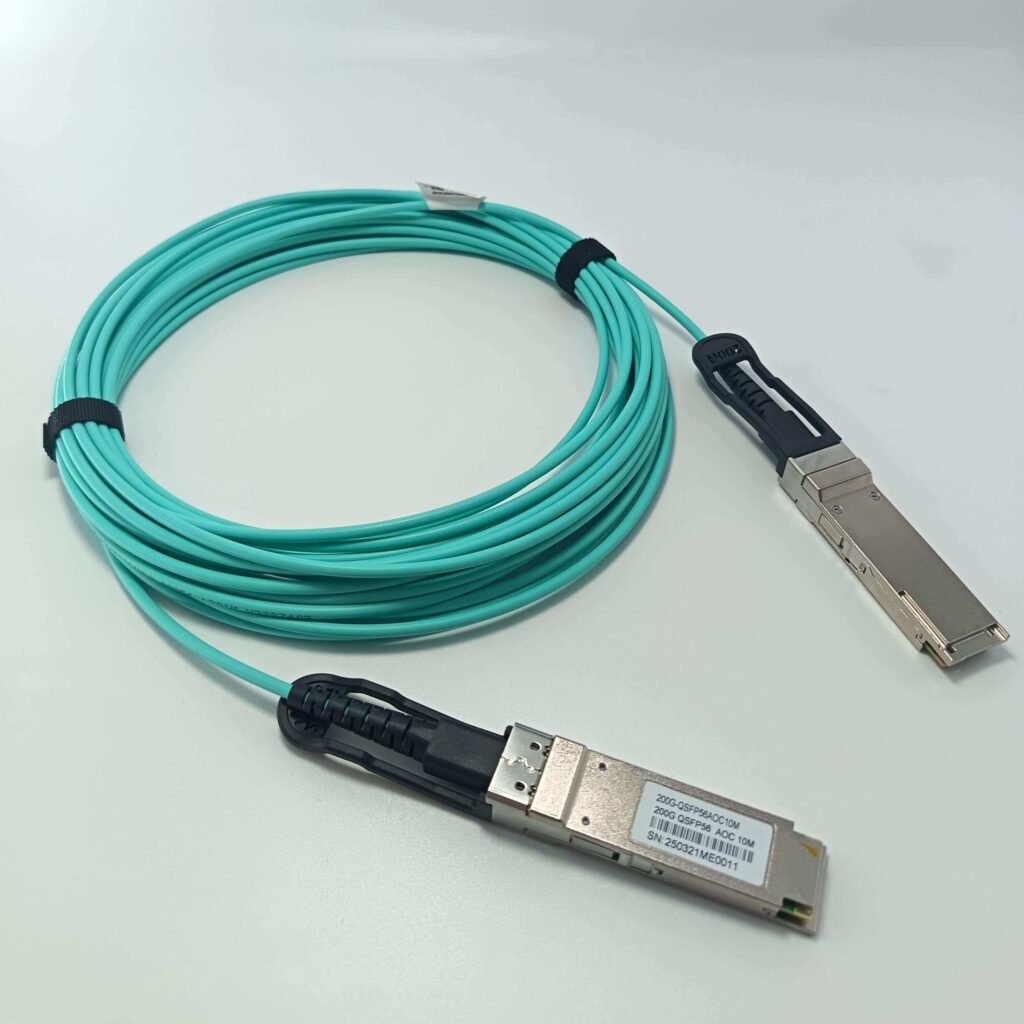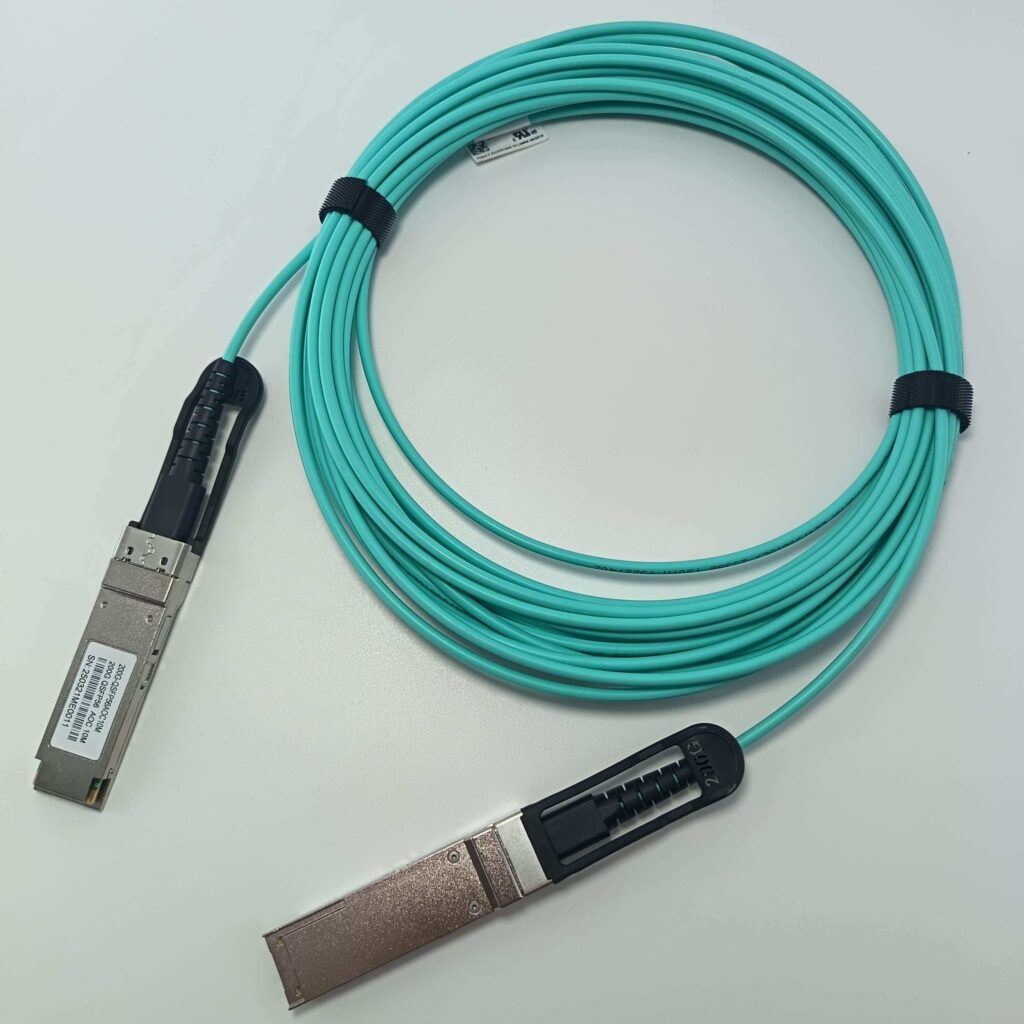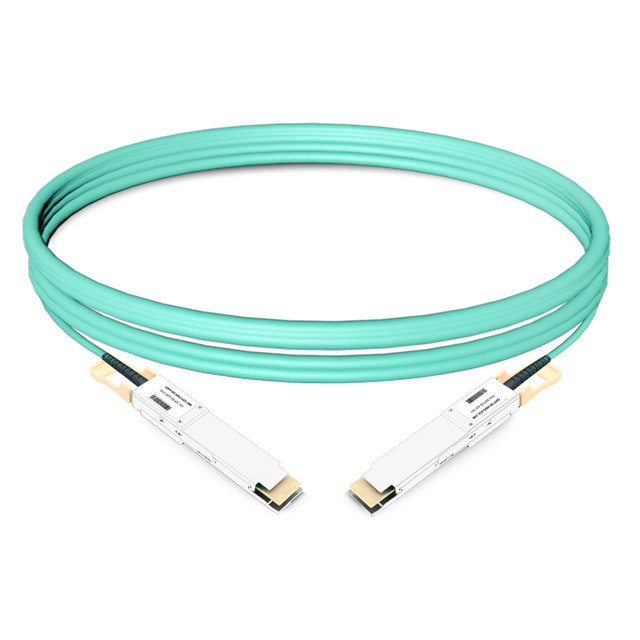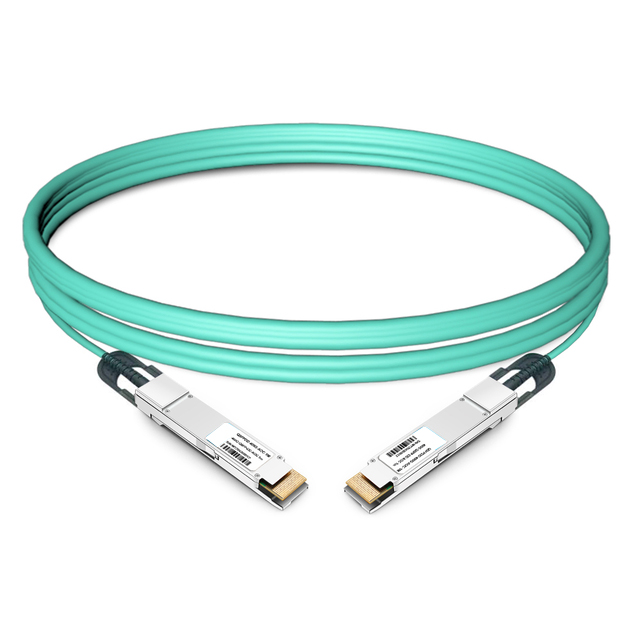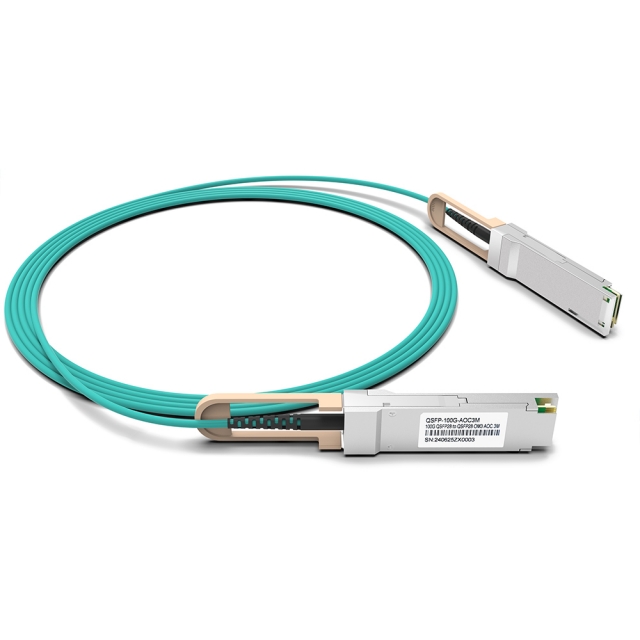What is an active optical cable?
As the demand for faster, longer-range network connections continues to grow, Active Optical Cables have emerged as an essential solution for modern networking. These innovative cables combine the speed of fiber optics with the simplicity of copper connections, making them a game-changer for businesses and data centers looking to improve their infrastructure. Let’s take a closer look at what makes AOC cable so special, their benefits, and their growing role in high-performance networking.
What Is an Active Optical Cable?
An Active Optical Cable (AOC) is a high-performance network cable that uses optical fiber and built-in electronic components to transmit data. Unlike traditional fiber-optic cables, which require external transceivers to send and receive signals, AOC cable have the necessary transceivers integrated into the connectors at both ends. This enables AOC cable to deliver lightning-fast data transfer speeds over longer distances without needing extra equipment.
In essence, AOC cables provide the convenience of plug-and-play fiber-optic connectivity, with light being used to transmit data signals instead of electrical signals, ensuring higher speeds and longer reach than copper alternatives.
Types and Technical Specifications
Active optical cables come in various forms, each tailored to specific needs. Below is a table summarizing common types and their specifications:
| Type | Data Rate | Common Use | Connector Examples |
|---|---|---|---|
| SFP+ Active Optical Cables | 10 Gbps | Networking | SFP+ |
| QSFP+ Active Optical Cables | 40 Gbps | Data centers, breakout configs | QSFP+ |
| QSFP28 Active Optical Cables | 100 Gbps | High-speed interconnects | QSFP28 |
| QSFP-DD/OSFP Active Optical Cables | 200-400 Gbps | Future-proof data centers | QSFP-DD, OSFP |
| HDMI Active Optical Cables | Varies | Video transmission | HDMI |
| DisplayPort Active Optical Cables | Varies | Video/audio transmission | DisplayPort |
Each type has specific connector types, fiber counts, and maximum supported distances.
AOC Cable vs Fiber and Copper Cables
To understand how AOC cable differ from other types of network cables, let’s compare them to traditional fiber-optic and copper cables:
AOC Cable vs Fiber: While a standard fiber-optic cable is simply a passive glass fiber that transmits light, an AOC cable has active transceivers built into the connectors at each end. This makes AOC cables more convenient as they don’t require additional optical transceivers or adapters to work. In short, AOC cables offer plug-and-play fiber connectivity.
AOC vs Copper Cables: AOC cables have several advantages over copper cables. They can transmit data over much longer distances (up to hundreds of meters) without signal degradation. Copper cables, on the other hand, are limited to much shorter distances and are bulkier. AOCs are also lighter, thinner, and more flexible, making them easier to manage and organize within network setups.
| Technology | Distance | Bandwidth | EMI Susceptibility | Ease of Use |
|---|---|---|---|---|
| Direct Attach Copper (DAC) | Up to 10m | Limited | High | High, plug-and-play |
| Passive Optical Cable | Long, varies | High | Low | Low, requires optics |
| Coaxial Cable | Short-medium | Medium | High | Medium |
| Twisted Pair (Cat6) | Up to 100m | Medium | High | High, standard |
| Active Optical Cable | Up to 4000m | Very High | Low | High, electrical compat |
Key Benefits of Active Optical Cables
There are several compelling reasons why AOC cables are becoming the preferred choice for modern networks. Here are some of the major benefits:
High-Speed Data Transmission: AOC cables support speeds ranging from 10 Gbps to over 400 Gbps, enabling fast data transfer even over long distances. This makes them ideal for data centers, high-performance computing (HPC), and other applications requiring massive data throughput.
Extended Range: Unlike copper cables, which typically only work over short distances, AOC cables can run up to 100 meters or more. This makes them perfect for connecting devices that are far apart without sacrificing performance.
Reduced Power Consumption: AOC cables consume less power than traditional fiber-optic solutions that require external transceivers. This contributes to energy savings and helps reduce operational costs.
Simplified Network Design: The built-in electronics in AOC cables eliminate the need for separate transceivers or adapters, streamlining network design and simplifying maintenance. This can save time and money for businesses looking to implement or upgrade their network infrastructure.
Lightweight and Flexible: AOC cables are lighter and thinner than copper cables, making them easier to install and manage. Their flexibility also allows for better cable management, which can improve airflow and reduce the risk of overheating in equipment racks.
Applications of AOC Cables
AOC cables are increasingly being used in a variety of settings, from data centers to telecommunications. Some of the most common applications include:
Data Centers: AOCs are often used to connect servers, switches, and storage systems in data centers, providing high-speed and long-distance connectivity. This is especially important as data traffic continues to grow with the rise of cloud computing and big data.
High-Performance Computing (HPC): In scientific research and simulation environments, AOC cables are essential for linking supercomputers and servers that require high data throughput over long distances.
Telecommunications and 5G Networks: As telecom companies expand their networks to support 5G technology, AOC cables are helping to provide the necessary bandwidth for fast and reliable connectivity.
Broadcasting and Video Production: AOC cables are used in the entertainment industry to transmit high-quality video signals over long distances without signal degradation, making them ideal for live broadcasts and studio environments.
Why Choose Active Optical Cables?
For businesses looking to optimize their networks, AOC cables provide an efficient and cost-effective solution. With the ability to handle high-speed data transmission over long distances, lower power consumption, and a simplified installation process, AOCs are quickly becoming the go-to choice for modern networking needs. Whether you are upgrading your data center infrastructure or expanding a telecommunications network, active optical cables offer significant advantages over traditional copper or fiber-optic solutions.
If you’re looking for a flexible, cost-effective, and high-performance network solution, AOC cables are a smart investment that will future-proof your network.
For more information about Active Optical Cables and to explore our full range of AOC products, visit Fibrecross.

